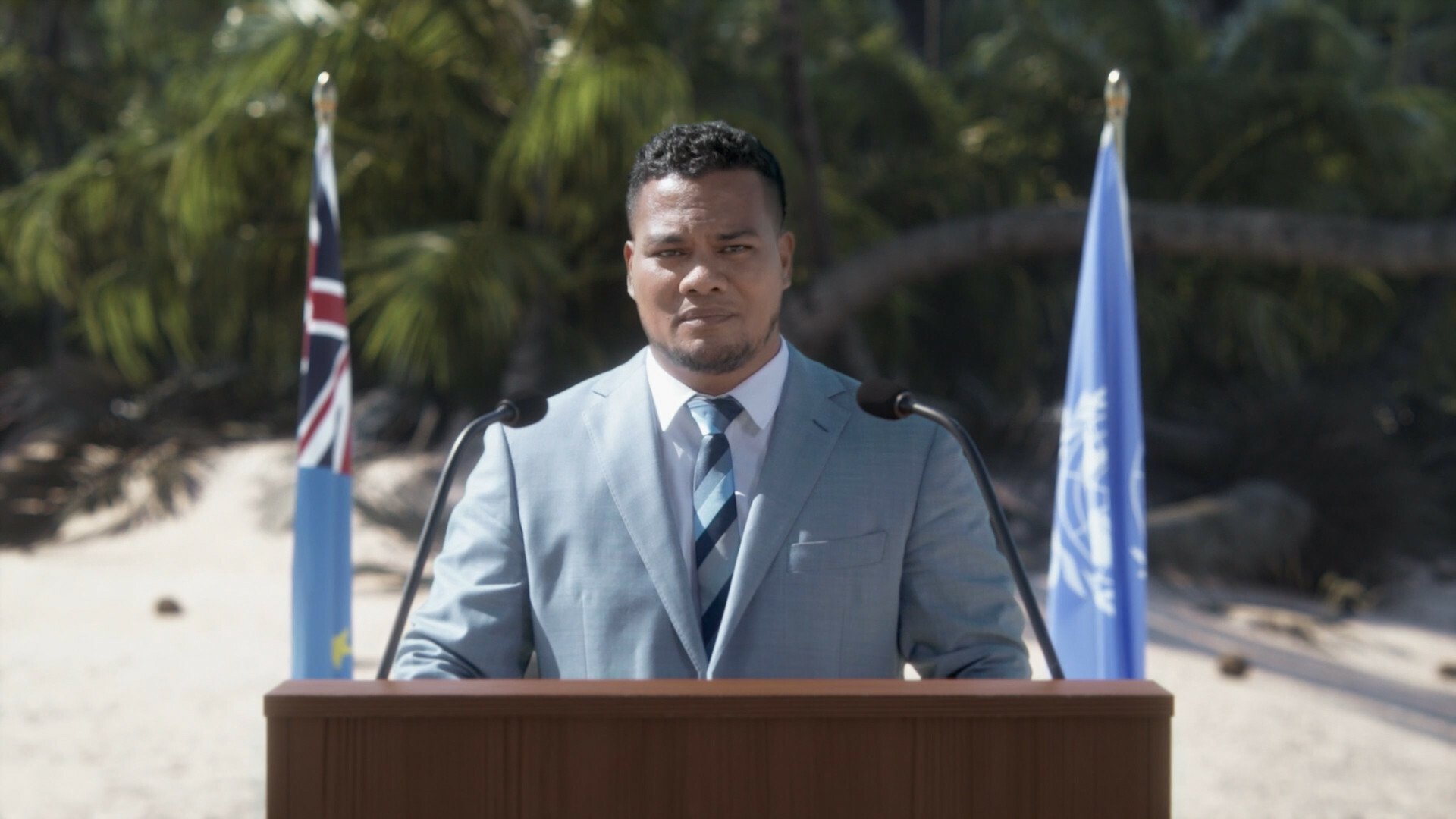
Tuvalu has announced plans to recreate itself in the metaverse, in an attempt to “preserve” the Pacific Island nation before rising sea levels engulf it completely. The government has also stressed the urgency of a shared global effort to fight climate change, which has put Tuvalu under constant threat.
“As our land disappears, we have no choice but to become the world’s first digital nation,” said Tuvalu’s foreign minister Simon Kofe in a speech to the COP27 climate summit, delivered against the backdrop of a digital island. “Our land, our ocean, our culture are the most precious assets of our people — and to keep them safe from harm, no matter what happens in the physical world, we’ll move them to the cloud.”
Tuvalu is under extreme threat from global warming, with scientists predicting it will become uninhabitable within the next 100 years or less. High tides cause severe flooding at the start of every year, and residents fear it is only getting worse. Last year Kofe addressed the COP26 while standing thigh-deep in water in order to stress the dire importance of climate action.
“Since COP26, the world has not acted, and so we in the Pacific have had to act,” said Kofe in this year’s address. “We have seen temperature rise projections remain well above 1.5 degrees Celsius, foretelling the imminent disappearance of islets like this one.”
With a total land area of just 10 square miles spread across its nine low-lying islands, Tuvalu is the fourth smallest country in the world by area. It is also the third smallest by population, with approximately 12,000 people calling it home. The digitisation project will begin with recreating Teafualiku Islet, Tuvalu’s smallest island and the first part of the country that will be lost if sea levels continue to rise.
Tuvalu’s small size makes recreating it in the metaverse a considerably less daunting task than if a larger country such as China were to attempt it. Even so, digitally replicating a country is still an arduous undertaking, particularly considering the level of accuracy this project will no doubt aim for. Metaverse graphics generally aren’t exactly dazzling either, but regardless of how good they are the digital Tuvalu will inevitably lose much of its beauty in translation.
It’s far from a perfect solution, if it can be called a solution at all. But at least it’s better than letting an entire Pacific Island nation’s culture, history, and landmarks literally disappear into the sea.
“Piece by piece we’ll preserve our country, provide solace to our people, and remind our children and our grandchildren what our home once was,” Kofe told the COP27. “Only considered global effort can ensure that Tuvalu does not move permanently online and disappear forever from the physical plane.
“Without a global conscience and a global commitment to our shared wellbeing, we may soon find the rest of the world joining us online as their lands disappear.”
This isn’t the first time Tuvalu has investigated how digital solutions might mitigate the disastrous impact of climate change. In 2021 the government took steps toward establishing a Tuvalu National Digital Ledger, which would secure its citizens’ data on a public blockchain. Including identity, citizenship, and financial information, this blockchain aims to ensure Tuvalu’s continued existence if its entire land mass is eventually engulfed by the sea.
Of course, neither the blockchain nor the metaverse is any substitute for actually having dry land to live on.
